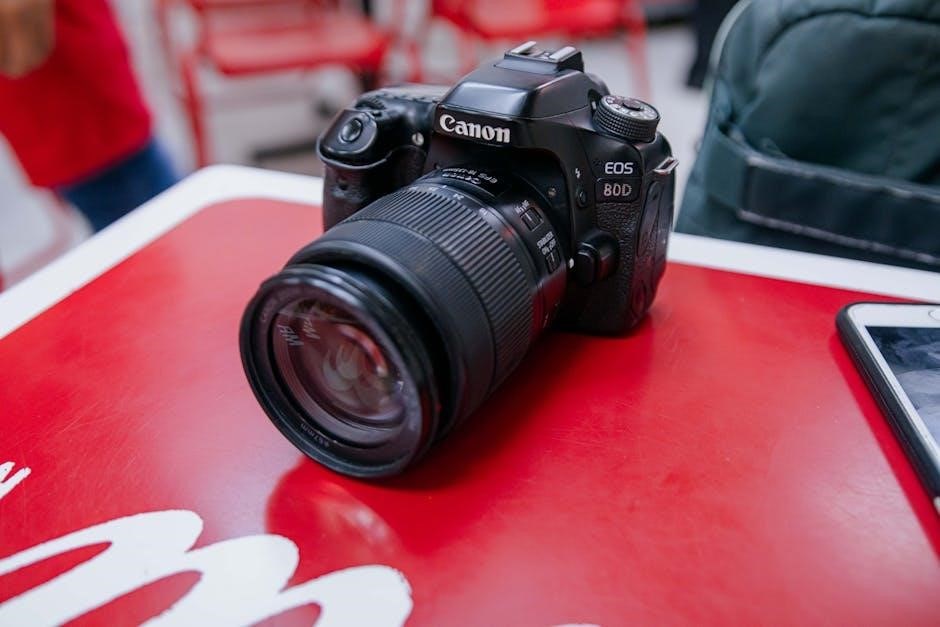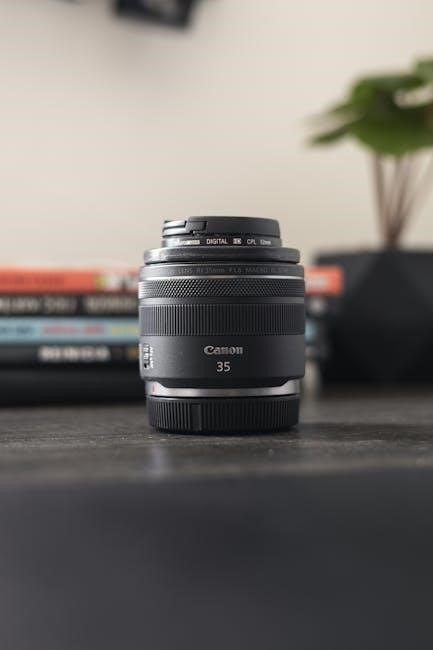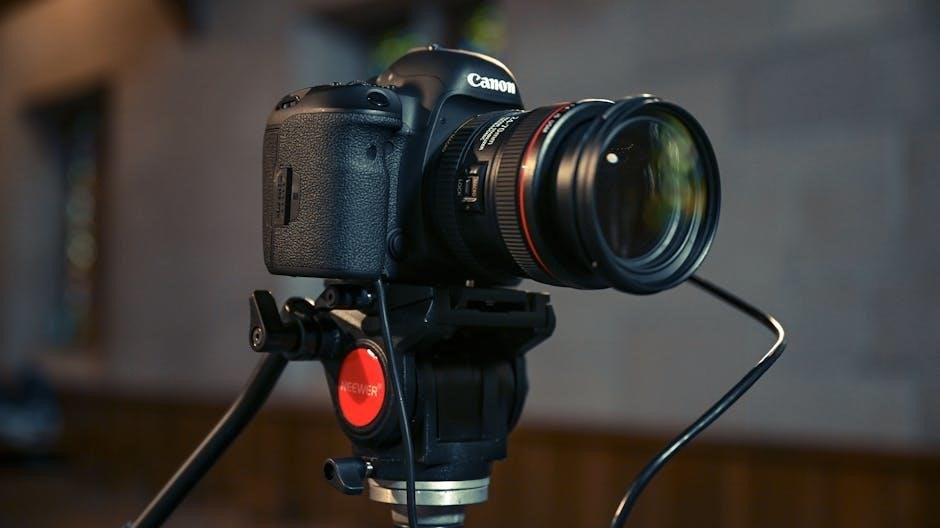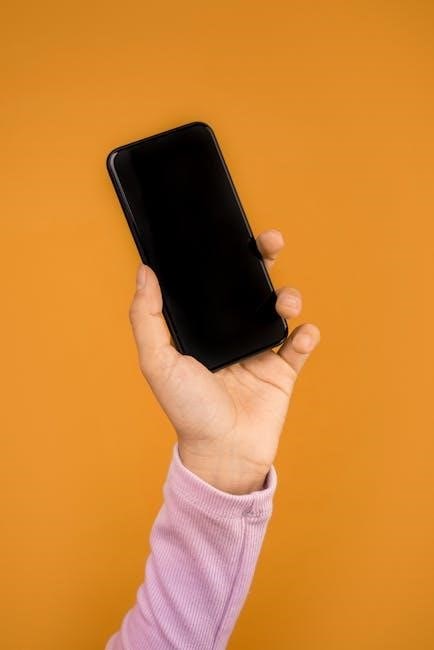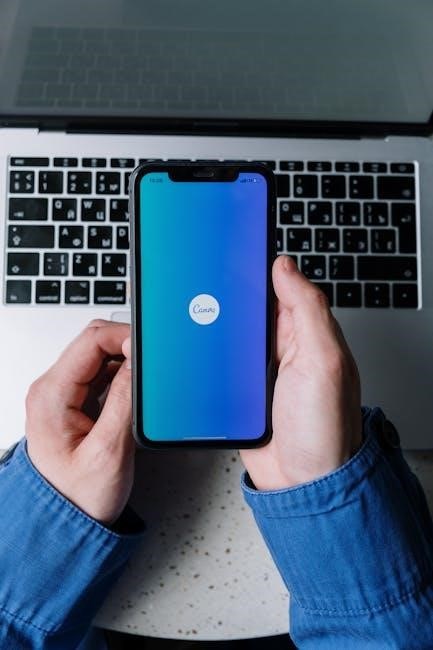Marie Callender’s Chicken Pot Pie is a beloved comfort food classic, offering a delicious blend of tender white-meat chicken, carrots, celery, and peas in a golden, flaky crust. This homestyle dish is perfect for cozy dinners or quick meals, with options for oven or microwave preparation. Renowned for its nostalgic charm and convenience, it’s a staple in many households. Follow these instructions to achieve a perfectly cooked, satisfying meal every time. Essential tools and step-by-step guidance ensure a hassle-free cooking experience.

Overview of Marie Callender’s Chicken Pot Pie
Marie Callender’s Chicken Pot Pie is a beloved comfort food classic, offering a delicious blend of tender white-meat chicken, carrots, celery, and peas in a golden, flaky, made-from-scratch crust. This homestyle dish is perfect for cozy dinners or quick meals, with options for oven or microwave preparation. Renowned for its nostalgic charm and convenience, it’s a staple in many households. The pot pie’s popularity stems from its ability to deliver a satisfying, hearty meal with minimal effort, making it a favorite for both individuals and families.
The dish features high-quality ingredients, including tender white-meat chicken, mixed vegetables, and a savory chicken broth, all wrapped in a buttery, flaky crust. The combination of flavorful ingredients and a homemade-style crust has made it a standout option in the frozen food aisle. Available in various sizes, from individual portions to family-sized pies, Marie Callender’s Chicken Pot Pie caters to diverse needs, whether it’s a quick dinner for one or a comforting meal for a group.
One of the key reasons for its enduring popularity is its versatility. While the oven-baked version is the most traditional method, the pot pie can also be cooked in the microwave for added convenience. This adaptability makes it a go-to option for busy professionals, students, or anyone seeking a hassle-free meal. Additionally, the pot pie’s consistent quality and ease of preparation have earned it a loyal following, with many fans praising its ability to taste like a homemade meal without the extra effort.

Marie Callender’s Chicken Pot Pie also holds a special place in many people’s hearts due to its nostalgic appeal. For many, it evokes memories of home-cooked meals and family gatherings. The combination of a warm, golden crust and a savory, comforting filling creates a sense of comfort and familiarity, making it a dish that resonates with people of all ages. Its convenience, quality, and heartfelt appeal have solidified its place as a beloved classic in modern cuisine.

Ingredients Overview
Marie Callender’s Chicken Pot Pie is crafted with high-quality ingredients that deliver a delicious and satisfying meal. The filling features tender white-meat chicken, carrots, celery, and peas, all perfectly balanced in a savory chicken broth. The chicken is cooked to perfection, ensuring a juicy and flavorful texture, while the mixed vegetables add a delightful crunch and variety to the dish. The broth is seasoned with a blend of spices that enhance the overall flavor without overpowering the natural taste of the ingredients.
The crust is one of the standout features of Marie Callender’s Chicken Pot Pie. Made from a flaky, buttery mixture, the crust is designed to bake to a golden brown perfection, providing a satisfying texture that complements the creamy filling. The crust is free from artificial flavors and colors, ensuring a homemade-style taste that resonates with traditional pot pie recipes. The combination of the flaky crust and hearty filling creates a meal that feels both comforting and indulgent.
Each Marie Callender’s Chicken Pot Pie is pre-packaged in a convenient paper tray inside an outer carton, making it easy to store and cook. The carton includes detailed nutritional information, which is essential for those monitoring their dietary intake. A single serving contains approximately 950mg of sodium, 40g of fat (with 22g being saturated fat), and 96g of carbs. While the dish is rich and satisfying, it’s important to be mindful of portion sizes, especially for those with specific dietary restrictions.
The pot pie is ready to bake, with all ingredients pre-prepared for convenience. This means there’s no need to chop vegetables, cook chicken, or make the crust from scratch. The filling and crust are expertly combined to ensure a consistent taste and texture every time. Whether you’re a busy professional or a home cook looking for a hassle-free meal, Marie Callender’s Chicken Pot Pie offers a reliable and delicious solution.

Essential Tools Needed
To successfully bake Marie Callender’s Chicken Pot Pie, you’ll need a few key tools. An oven is the primary cooking appliance, while a baking sheet is essential for placing the pie to catch any spills. Aluminum foil is used to wrap the crust edge, preventing over-browning. A fork is necessary for venting the crust, ensuring steam escapes evenly. Lastly, oven mitts are crucial for safely handling the hot pie after baking. These tools ensure a smooth and safe cooking process.
4.1 Oven
The oven is the primary cooking appliance for preparing Marie Callender’s Chicken Pot Pie, ensuring a golden-brown crust and a perfectly cooked filling. Preheating the oven to the correct temperature is crucial for achieving the best results. For most pot pies, the recommended temperature is 400°F (200°C). Allow the oven to preheat fully before placing the pie inside, as this ensures even cooking and prevents the crust from becoming soggy.
Position the oven rack in the middle of the oven to promote consistent air circulation and even heating. This helps the pot pie cook uniformly, with the crust browning evenly and the filling heating through completely. Place the pie on a baking sheet lined with parchment paper or aluminum foil to catch any spills and make cleanup easier. If using foil, you can also wrap it around the edges of the crust to prevent over-browning.
The baking time typically ranges from 45 to 60 minutes, depending on the size of the pot pie and your oven’s performance. During this time, the crust will transform into a golden, flaky texture, while the filling will become hot and bubbly. To ensure food safety, use a food thermometer to verify that the internal temperature reaches 165°F (74°C). This step is especially important for frozen pot pies, as it guarantees the filling is fully cooked.
Once the pie is ready, carefully remove it from the oven using oven mitts or tongs to avoid burns. Place it on a heat-resistant surface and let it stand for a few minutes before serving. This allows the filling to set slightly and prevents steam from causing burns when serving. The oven’s consistent heat and precise temperature control make it the ideal method for cooking Marie Callender’s Chicken Pot Pie, ensuring a delicious, homestyle meal every time.
For best results, always follow the package instructions for specific oven settings and cooking times, as these may vary slightly depending on the product size or version. By using your oven correctly, you can enjoy a perfectly baked pot pie with a crispy crust and a savory, satisfying filling.

4.2 Baking Sheet
A baking sheet is an essential tool when cooking Marie Callender’s Chicken Pot Pie in the oven. It provides a stable surface for the pie, ensuring it cooks evenly and preventing any potential mess from spills or drips. Line the baking sheet with parchment paper or lightly grease it to prevent the pie from sticking and to make cleanup easier. This step is crucial for maintaining the integrity of the pot pie and ensuring it bakes without complications.
Place the Marie Callender’s Chicken Pot Pie in the center of the prepared baking sheet, leaving enough space around it for air to circulate freely. This allows heat to distribute evenly around the pie, promoting a golden-brown crust and a thoroughly cooked filling. Avoid overcrowding the baking sheet, as this can disrupt airflow and lead to uneven cooking. If cooking multiple pies, use additional baking sheets as needed to ensure each pie has enough space.
The baking sheet also acts as a protective layer, catching any filling that might bubble over during baking. This not only keeps your oven clean but also prevents the pie from losing any of its flavorful ingredients. For added protection, you can wrap the edges of the crust with aluminum foil before placing the pie on the baking sheet. This prevents the crust from burning and ensures it bakes to a perfect golden brown.

When placing the baking sheet in the oven, ensure it is positioned in the middle rack for optimal cooking results. This allows the pie to cook evenly without being too close to the top or bottom heating elements, which could cause uneven browning or undercooking. Remove the baking sheet from the oven carefully using oven mitts or tongs, as it will be extremely hot. Let the pie stand on the baking sheet for a few minutes before serving to allow any excess moisture to evaporate and the filling to set slightly.
Always remember to handle the baking sheet with care, as it will be hot after cooking. Use oven mitts or tongs to avoid burns and ensure the pie cools slightly before serving. This attention to detail will help you enjoy a safe and satisfying meal every time you bake a Marie Callender’s Chicken Pot Pie.
4.3 Aluminum Foil
Aluminum foil is a crucial tool when baking Marie Callender’s Chicken Pot Pie, playing a key role in achieving a perfectly cooked crust. One of its primary uses is to protect the edges of the pie crust from over-browning during the baking process. The crust, made from a flaky, buttery mixture, can easily become too dark if exposed to direct heat for the entire cooking time. By wrapping a strip of aluminum foil around the edges of the crust, you ensure even cooking and prevent the crust from burning.
To use aluminum foil effectively, cut a long, narrow strip and gently wrap it around the outer edge of the pie crust. This step should be done before placing the pot pie on the baking sheet. The foil acts as a barrier, shielding the crust from excessive heat while allowing the rest of the pie to cook properly. It’s important to secure the foil snugly but not too tightly, as this could restrict the natural expansion of the crust during baking.
Another useful application of aluminum foil is for covering the baking sheet. Line the sheet with a piece of foil or parchment paper to catch any spills or drips from the pie. This makes cleanup easier and prevents the oven from getting messy. For added convenience, you can also use foil to cover the baking sheet when cooking multiple pies, ensuring each one has enough space and preventing them from sticking together.
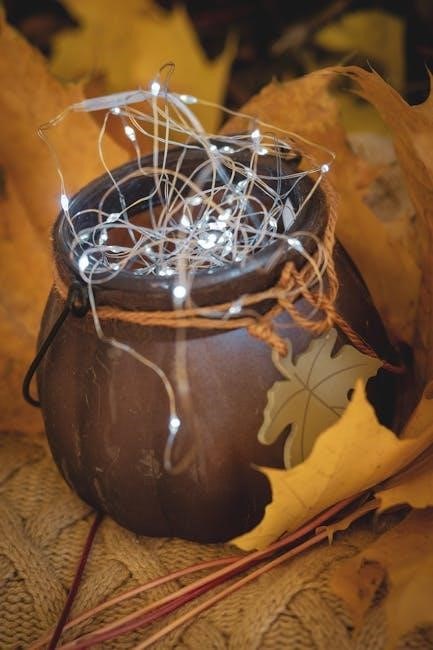
When using aluminum foil, it’s essential to follow a few simple tips for the best results. First, ensure the foil is positioned correctly to cover only the crust edges, avoiding the filling. Second, avoid wrapping the foil too tightly, as this could cause the crust to steam instead of bake evenly. Finally, remove the foil during the last 10-15 minutes of baking to allow the crust edges to brown slightly, enhancing the pie’s appearance and texture.
Always handle the foil carefully, as it can be sharp when cut. After cooking, remove the foil gently to avoid damaging the crust. With these simple steps, aluminum foil becomes an indispensable helper in your kitchen, ensuring a flawless baking experience every time you prepare Marie Callender’s Chicken Pot Pie.
4.4 Fork for Venting
A fork is an essential tool for venting the crust of Marie Callender’s Chicken Pot Pie, ensuring it cooks evenly and preventing the crust from becoming soggy or bursting open during baking. Venting allows steam to escape from the filling, which is crucial for maintaining the structural integrity and texture of the crust. Without proper ventilation, the steam can build up inside the pie, leading to an uneven bake and potentially causing the crust to crack or bubble excessively.
To vent the crust correctly, use a fork to pierce several small holes in the center of the pie. Gently press the tines of the fork into the crust, creating 4 to 5 evenly spaced holes. This step should be done before placing the pot pie in the oven. The holes should be large enough to allow steam to escape but not so large that they compromise the crust’s structure; For larger pies, you may also consider making a small slit in the top crust with a sharp knife, in addition to the fork holes, to ensure adequate ventilation.
Proper venting not only helps the crust bake evenly but also enhances the overall texture. By allowing steam to escape, the crust remains flaky and golden, while the filling cooks thoroughly without overflowing. It’s important to avoid piercing the crust too deeply, as this could allow the filling to leak out during baking. Instead, focus on creating shallow holes that serve the sole purpose of releasing steam.
In addition to the fork, you can also use a knife to create decorative slits in the crust, which serve both functional and aesthetic purposes. These slits can be arranged in a pattern that adds visual appeal to the pie while ensuring proper ventilation. However, the fork remains the most straightforward and reliable tool for this step, as it creates consistent, evenly distributed holes without damaging the crust.
After venting, place the pot pie on a baking sheet lined with aluminum foil or parchment paper to catch any potential spills. Bake the pie in a preheated oven at 400°F (200°C) for 45 to 50 minutes, or until the crust is golden brown and the filling is hot and bubbling. To ensure doneness, check that the internal temperature has reached 165°F (74°C) using a food thermometer.
By using a fork to vent the crust, you can achieve a perfectly baked Marie Callender’s Chicken Pot Pie with a light, flaky crust and a deliciously cooked filling. This simple step is a key part of the cooking process and ensures a satisfying, homestyle meal every time.
Remember to handle the hot pot pie carefully after baking, as it will be extremely hot. Let it stand for a few minutes before serving to allow the filling to set slightly and the crust to retain its structure. This ensures a safe and enjoyable dining experience for everyone.
4.5 Oven Mitts
Oven mitts are an indispensable tool when cooking Marie Callender’s Chicken Pot Pie, ensuring safe and secure handling of the hot dish during and after baking. These mitts provide a protective barrier between your hands and the extreme heat of the pot pie, preventing burns and ensuring a smooth cooking process. Made from heat-resistant materials like cotton, silicone, or quilted fabrics, oven mitts are designed to withstand high temperatures, making them a must-have in every kitchen.
When removing the pot pie from the oven, oven mitts play a critical role. The pot pie emerges extremely hot, with the crust and filling reaching internal temperatures of up to 165°F (74°C). Without proper protection, handling the pie could result in painful burns. By wearing oven mitts, you can grip the pie firmly and transfer it safely to a heat-resistant surface, such as a trivet or cutting board, to cool slightly before serving.
Oven mitts also provide a secure grip, reducing the risk of dropping the pot pie. This is especially important when dealing with a hot, fragile item like a pie, which could shatter or spill if mishandled. The textured surfaces of many oven mitts enhance traction, ensuring you maintain control even when the pie is freshly baked and slippery with condensation.
Additionally, oven mitts protect your countertops and tables from heat damage. Placing a hot pot pie directly on an unprotected surface could cause scorching or discoloration. By using oven mitts, you create a barrier that prevents such damage, preserving the integrity of your kitchen surfaces.

When choosing oven mitts, opt for ones with a snug fit and adequate thickness to ensure maximum protection. Silicone mitts are particularly effective for high-heat tasks, as they are resistant to melting and can withstand extreme temperatures. Quilted cotton mitts, on the other hand, offer excellent insulation and are often more comfortable for extended use.
Remember to always use oven mitts when handling the pot pie, both when removing it from the oven and when transferring it to a serving dish. This simple precaution ensures a safe and enjoyable cooking experience. Neglecting to use oven mitts could lead to accidents, making them an essential tool for preparing Marie Callender’s Chicken Pot Pie and other baked dishes.

Step-by-Step Oven Instructions
Preheat your oven to 400°F (200°C). Remove the pot pie from the carton but keep it in the paper tray. Wrap the crust edge with aluminum foil to prevent over-browning. Place the pie on a baking sheet lined with parchment paper. Bake for 50-65 minutes, or until the crust is golden brown and the filling is hot and bubbling. Use a food thermometer to ensure the internal temperature reaches 165°F. Let the pie stand for 5 minutes before serving. This ensures a safe and perfectly cooked meal.
5.1 Preheating the Oven
Preheating the oven is the first and most crucial step in cooking Marie Callender’s Chicken Pot Pie to perfection. Set your oven to 400°F (200°C) and allow it to preheat fully. This step ensures even cooking and helps the crust bake to a golden brown. Place the oven rack in the middle position to promote consistent air circulation. Avoid skipping or rushing this step, as improper preheating can lead to uneven cooking or an undercooked crust. Once preheated, the oven is ready for the next step—placing the pot pie on a prepared baking sheet. Always verify the temperature with an oven thermometer for accuracy, as this ensures the best results. Proper preheating is essential for achieving a perfectly cooked meal. By taking the time to preheat your oven correctly, you set the stage for a delicious, golden-brown pot pie with a flaky crust and hot, bubbling filling. This step is foundational and should never be overlooked for optimal results. Let the oven preheat while you prepare the pot pie, ensuring everything is ready for a seamless cooking process. Preheating the oven is not just a step; it’s the key to a perfectly cooked Marie Callender’s Chicken Pot Pie. Always prioritize this step for the best outcome. The oven’s temperature and readiness directly impact the final result, making preheating indispensable. With the oven properly preheated, you’re one step closer to enjoying a satisfying, homestyle meal. The importance of preheating cannot be overstated, as it ensures the pot pie cooks evenly and the crust bakes to perfection. Take the time to preheat your oven fully, and you’ll be rewarded with a delicious, golden-brown Marie Callender’s Chicken Pot Pie. This step is simple but critical, setting the stage for a hassle-free cooking experience. Always remember, a properly preheated oven is the starting point for a perfectly cooked pot pie. By following this step carefully, you ensure the best possible outcome for your meal. Preheating the oven is the first step toward creating a memorable dining experience with Marie Callender’s Chicken Pot Pie. It’s a small but vital detail that makes all the difference in the quality of your meal. So, take the time to preheat your oven fully, and enjoy the perfect balance of flavors and textures in every bite. This step is your foundation for a successful cooking process, ensuring that your pot pie turns out exactly as intended. Preheating the oven is not just a recommendation; it’s a necessity for achieving the best results. By doing so, you ensure that your Marie Callender’s Chicken Pot Pie is cooked to perfection, with a golden crust and a hot, flavorful filling. This step is your key to a delicious, stress-free meal that’s sure to satisfy. Always preheat your oven to 400°F (200°C) and let it reach the desired temperature before proceeding; This ensures that your pot pie cooks evenly and the crust bakes to a golden brown. The importance of preheating cannot be overstated, as it directly impacts the quality of your final dish. Take the time to preheat your oven fully, and you’ll enjoy a perfectly cooked Marie Callender’s Chicken Pot Pie every time. This step is simple yet critical, making it an essential part of the cooking process. By preheating your oven correctly, you set the stage for a delicious meal that’s both satisfying and enjoyable. Remember, a properly preheated oven is the first step toward cooking a perfect pot pie. So, take the time to preheat, and let the oven do the rest. Your patience will be rewarded with a golden-brown, flavorful meal that’s sure to please. Preheating the oven is the starting point for a successful cooking experience, ensuring that your Marie Callender’s Chicken Pot Pie turns out perfectly. Always prioritize this step for the best results. The oven’s temperature and readiness are crucial for achieving a golden crust and a hot, bubbly filling. By preheating your oven to 400°F (200°C), you ensure that your pot pie cooks evenly and thoroughly. This step is the foundation of a perfectly cooked meal, so take the time to get it right. With the oven properly preheated, you’re ready to move on to the next step, knowing that your pot pie will turn out delicious. Preheating the oven is a simple yet essential step that should never be skipped. It’s the key to achieving a perfectly cooked Marie Callender’s Chicken Pot Pie with a flaky, golden crust and a hot, flavorful filling. Always preheat your oven to the recommended temperature, and let it reach that temperature fully before proceeding. This ensures that your pot pie cooks evenly and turns out exactly as intended. By taking the time to preheat your oven correctly, you set the stage for a delicious, stress-free meal that’s sure to satisfy. Preheating the oven is the first step toward creating a memorable dining experience with Marie Callender’s Chicken Pot Pie. It’s a small but vital detail that makes all the difference in the quality of your meal. So, take the time to preheat your oven fully, and enjoy the perfect balance of flavors and textures in every bite. This step is your foundation for a successful cooking process, ensuring that your pot pie turns out exactly as intended. Preheating the oven is not just a recommendation; it’s a necessity for achieving the best results. By doing so, you ensure that your Marie Callender’s Chicken Pot Pie is cooked to perfection, with a golden crust and a hot, flavorful filling. This step is your key to a delicious, stress-free meal that’s sure to satisfy. Always preheat your oven to 400°F (200°C) and let it reach the desired temperature before proceeding. This ensures that your pot pie cooks evenly and the crust bakes to a golden brown. The importance of preheating cannot be overstated, as it directly impacts the quality of your final dish. Take the time to preheat your oven fully, and you’ll enjoy a perfectly cooked Marie Callender’s Chicken Pot Pie every time. This step is simple yet critical, making it an essential part of the cooking process. By preheating your oven correctly, you set the stage for a delicious meal that’s both satisfying and enjoyable. Remember, a properly preheated oven is the first step toward cooking a perfect pot pie. So, take the time to preheat, and let the oven do the rest. Your patience will be rewarded with a golden-brown, flavorful meal that’s sure to please. Preheating the oven is the starting point for a successful cooking experience, ensuring that your Marie Callender’s Chicken Pot Pie turns out perfectly. Always prioritize this step for the best results. The oven’s temperature and readiness are crucial for achieving a golden crust and a hot, bubbly filling. By preheating your oven to 400°F (200°C), you ensure that your pot pie cooks evenly and thoroughly. This step is the foundation of a perfectly cooked meal, so take the time to get it right. With the oven properly preheated, you’re ready to move on to the next step, knowing that your pot pie will turn out delicious. Preheating the oven is a simple yet essential step that should never be skipped. It’s the key to achieving a perfectly cooked Marie Callender’s Chicken Pot Pie with a flaky, golden crust and a hot, flavorful filling. Always preheat your oven to the recommended temperature, and let it reach that temperature fully before proceeding. This ensures that your pot pie cooks





